Pontederia cordata – Pickerelweed
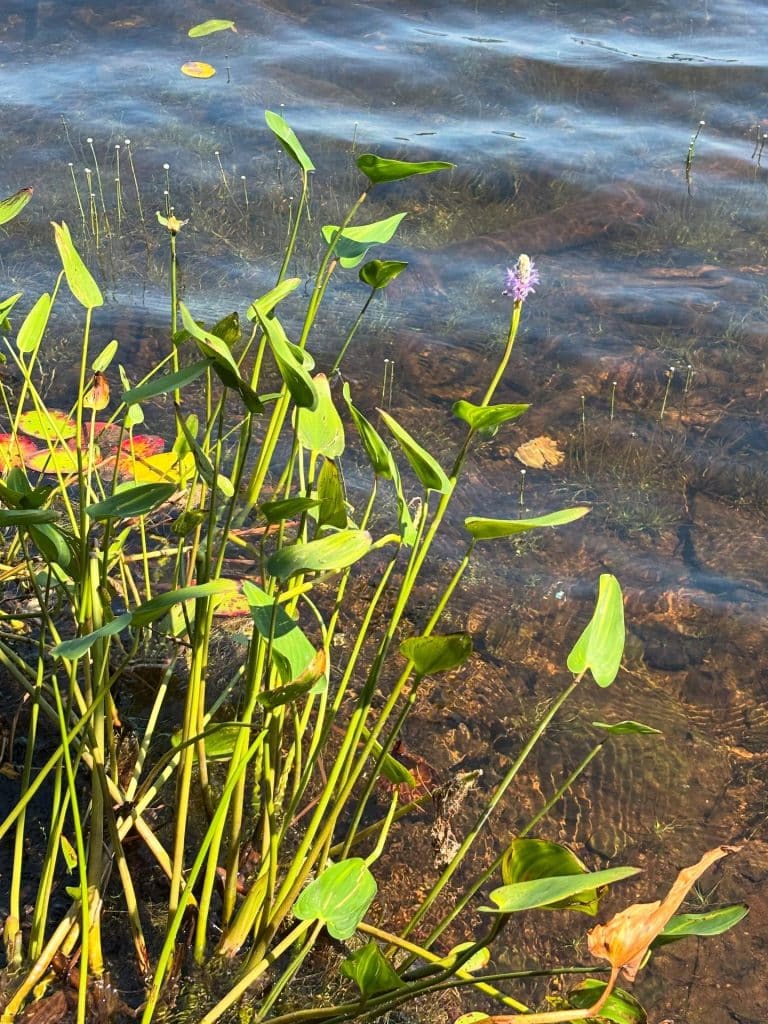
Pickerelweed (Pontederia cordata) is a native perennial that can be found in shallow water such as the edges of ponds. Pickerelweed can be identified by its heart-shaped leaves with rounded lobes. Clusters of lavender flowers shoot up above the leaves from flower stalks. Young leaves are edible raw or cooked. Seeds can be eaten raw, […]
Melilotus albus – White sweet clover
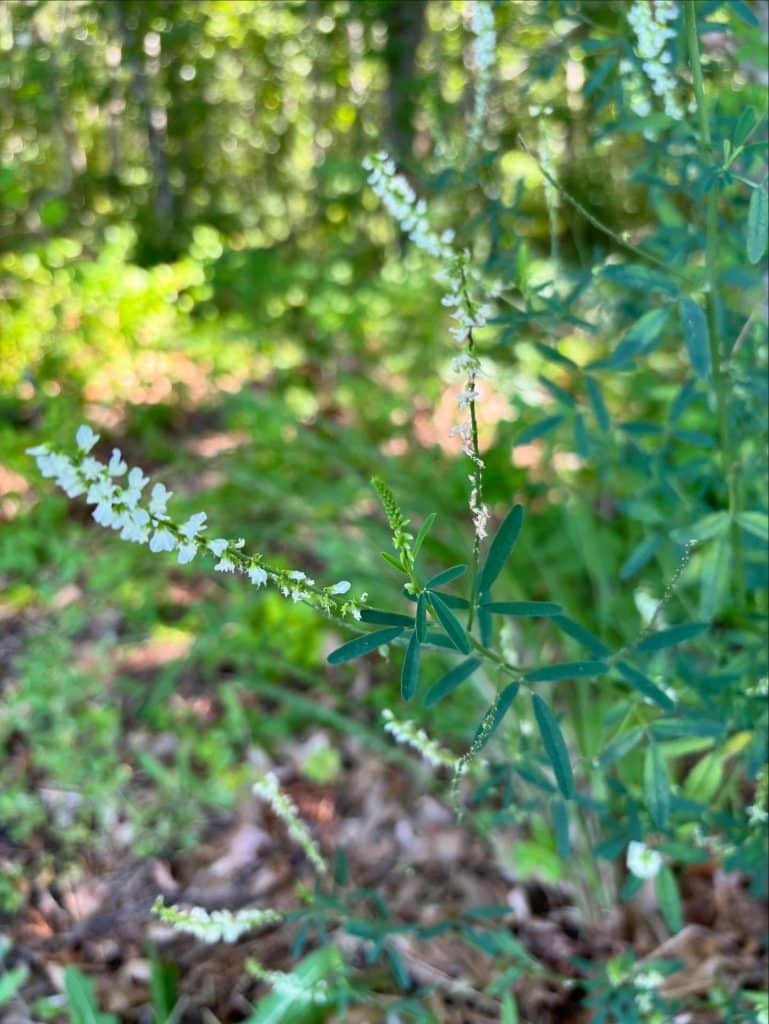
White sweet clover (Melilotus albus) is a non-native plant with edible uses. It can be found in disturbed soil that receives full sun. White sweet clover, also known as melilot, can be identified by its compound leaves divided into three leaflets and clusters of small white flowers. Young leaves can be used in a […]
Brasenia schreberi – Water shield
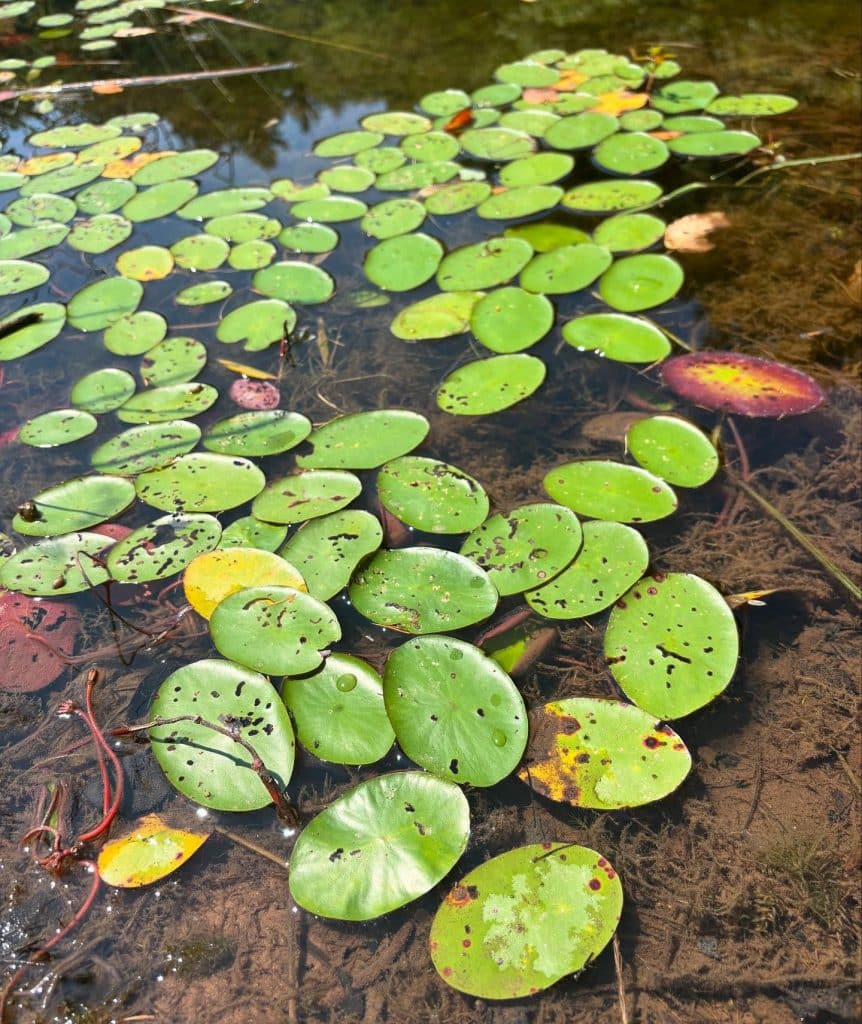
Water shield (Brasenia schreberi) is a native perennial with edible leaves. Water shield can be found in shallow lakes, ponds, and rivers. It can be identified by oval leaves with a reddish stem attaching to the middle of the leaf. All underwater parts of the plant are coated with jelly-slime. Purple flowers emerge from the […]
Suaeda maritima – Sea blite
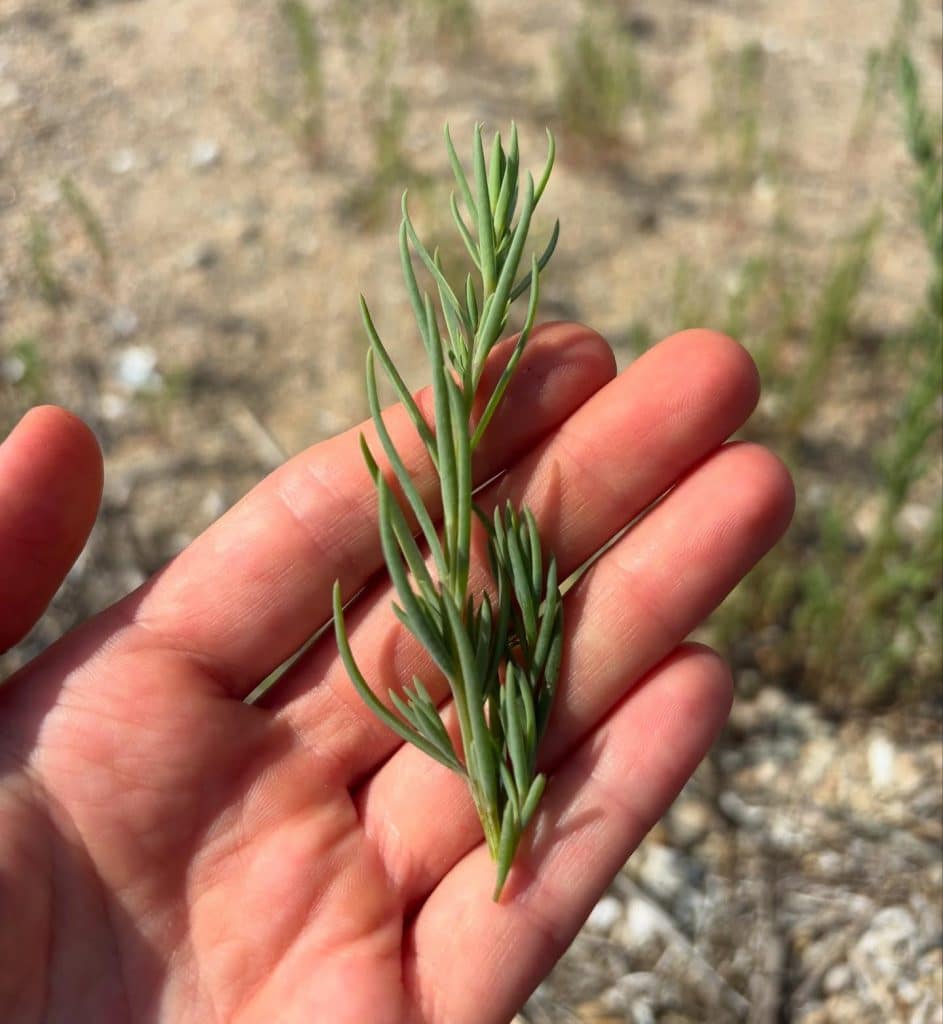
Sea blite (Suaeda maritima) is an edible plant that can be found along beaches and salt marshes. The subspecies that grows in CT is considered non-native. Sea blite can be identified by its fleshy, almost cylindrical leaves. It produces pale green flowers late summer-fall. Sea blite is edible raw or cooked. It has a salty […]
Ceanothus americanus – New Jersey Tea
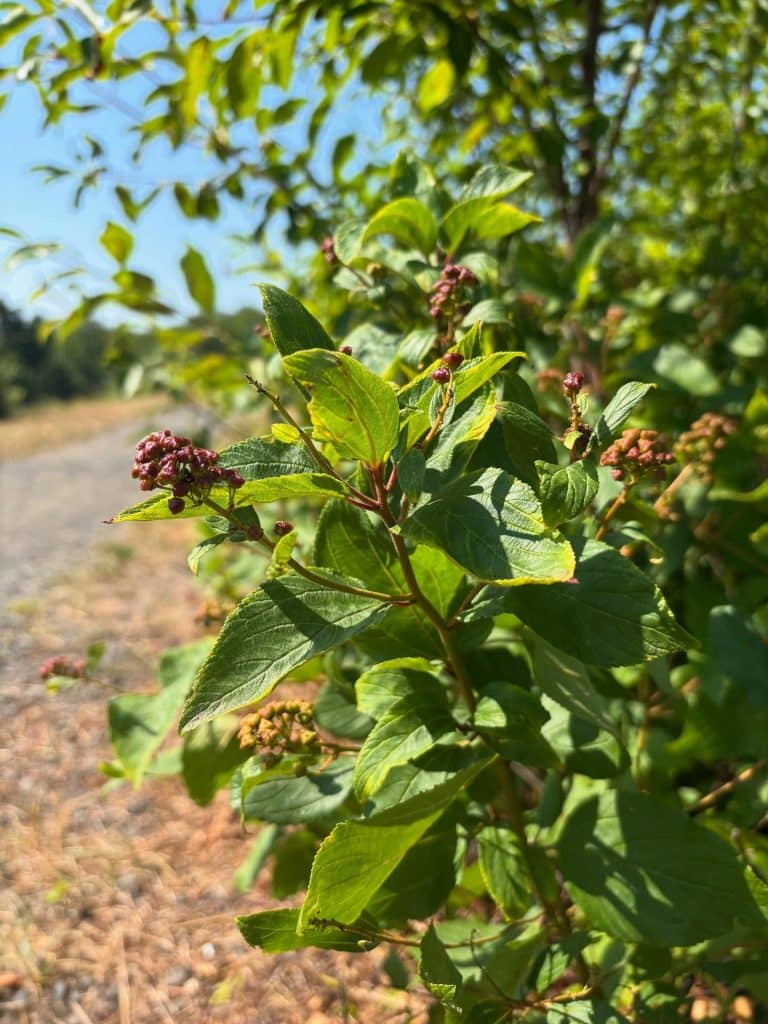
New Jersey tea (Ceanothus americanus) is a native shrub whose leaves were used as a caffeine-free tea substitute during the Revolutionary War. New Jersey tea can be found in dry soil with full sun. New Jersey tea can be identified by its alternate, finely toothed leaves that have three prominent veins. Older stems are reddish-brown. […]
Sagittaria latifolia – Wapato
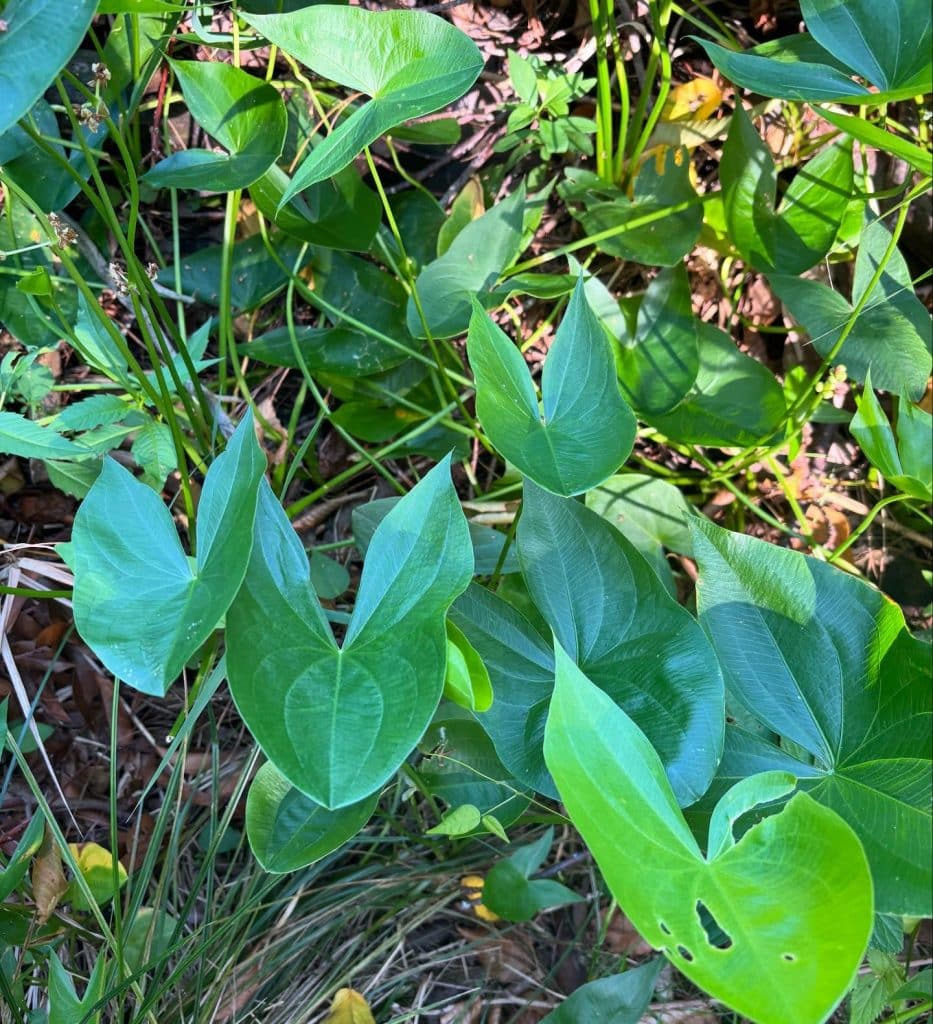
Wapato (Sagittaria latifolia) is a native perennial with edible tubers. Wapato, also known as “katniss” and “arrowhead”, can be found in or at the edge of water. It grows in river edges, marshes, ponds, and lakes. Wapato has arrow-shaped leaves with pointed lobes. It produces flowers in the summer which have three white petals and […]
Euthamia graminifolia – Grass-leaved Goldenrod
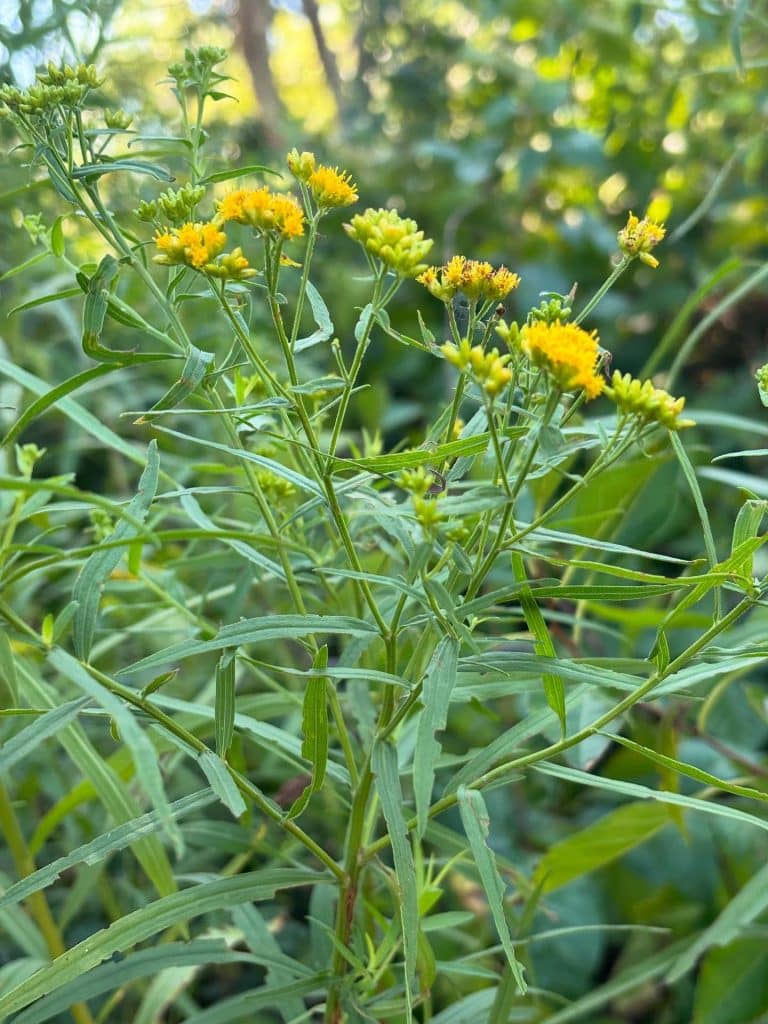
Grass-leaved goldenrod (Euthamia graminifolia) is a native perennial with edible and medicinal uses. The plant can be identified by its narrow, grass-like leaves and small yellow flowers. Leaves and flowers can be used fresh or dried to make a tea. Drinking the tea has been used to treat infections and chest pains.
Sonchus arvensis – Perennial Sow Thistle

Perennial sow thistle (Sonchus arvensis) is an introduced edible dandelion look-a-like. It can be found in sunny areas such as gardens, fields, and waste places. Perennial sow thistle has a dandelion-like flower, but unlike dandelion, there will be multiple flowers per stalk. Flowering stalks will be densely hairy. The hollow stem will produce a milky […]
Atriplex prostrata – Triangle Orache
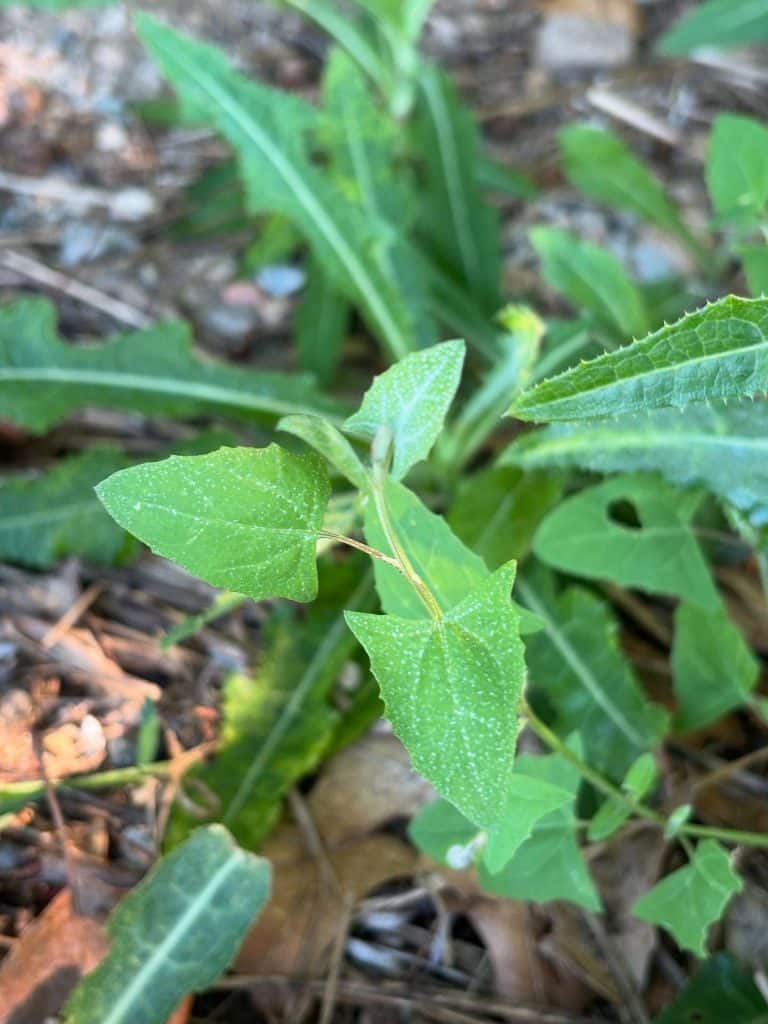
Triangle orache (Atriplex prostrata) is an edible plant that can be found along the coast and in salty soil. Saltbush/orache (Atriplex spp.) is a group of 200+ species. No Atriplex species are toxic, but not all are palatable. Triangle orache can be identified by its spear-shaped leaves with toothed edges and a white bloom. It […]
Morus rubra – Red Mulberry
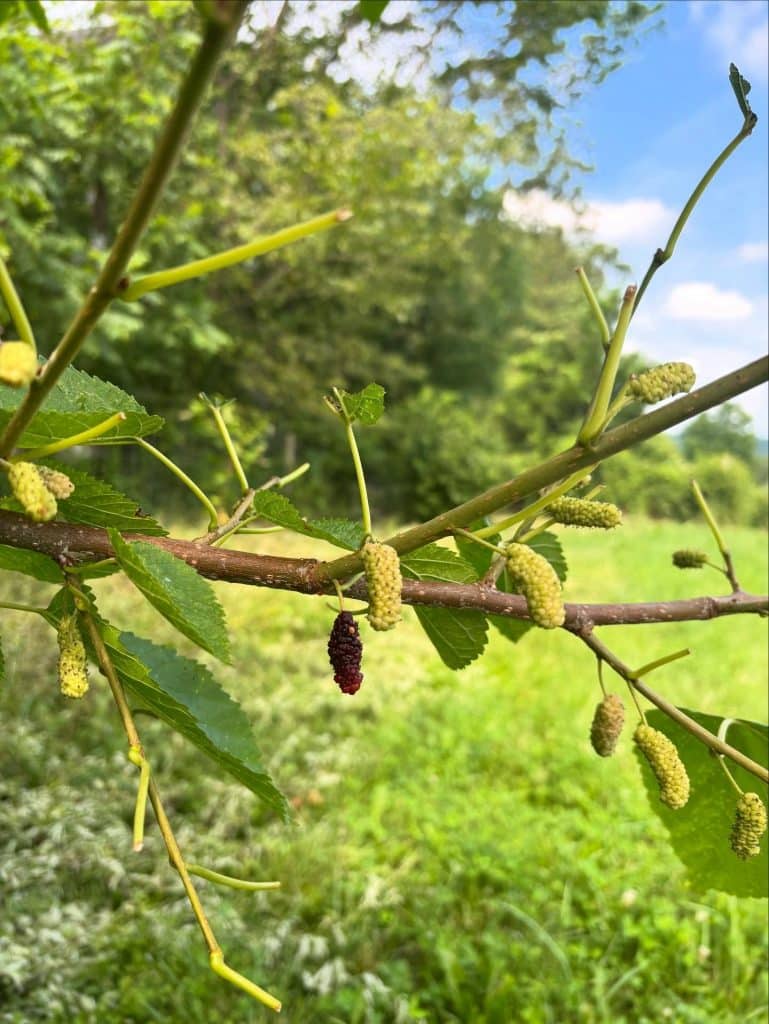
Red mulberry (Morus rubra) is a rare, native tree with edible berries. Red mulberries can be planted in partial to full sun or found in hardwood forests or valleys. Red mulberry trees produce alternate heart-shaped leaves that are sometimes lobed in younger plants. The tree has a fast growth rate. Native red mulberries can […]
Pycnanthemum virginianum – Virginia Mountain Mint
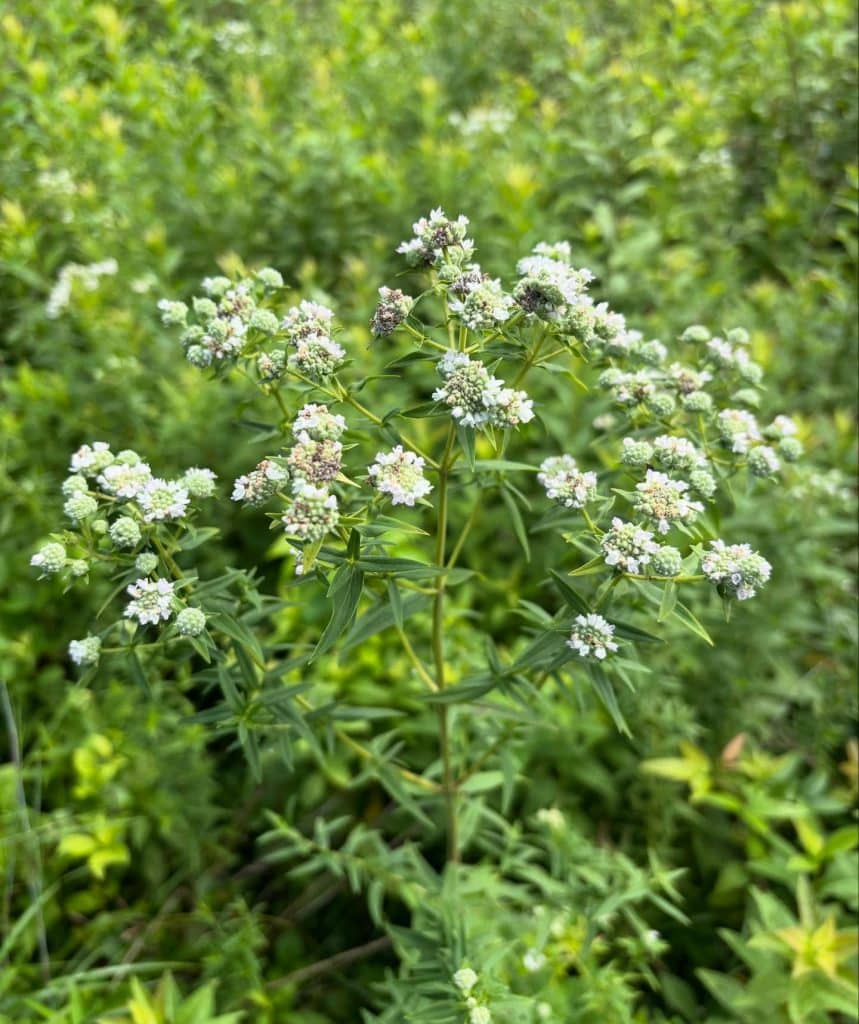
Virginia mountain mint (Pycnanthemum virginianum) is a native edible perrenial in the mint family. It can be found or planted in sunny areas such as meadows and fields. The plant can be identified by its narrow leaves and purple spotted flowers. Only a few flowers per cluster bloom at a time. Leaves and flowers have […]
Omphalotus illudens – Jack O’lantern
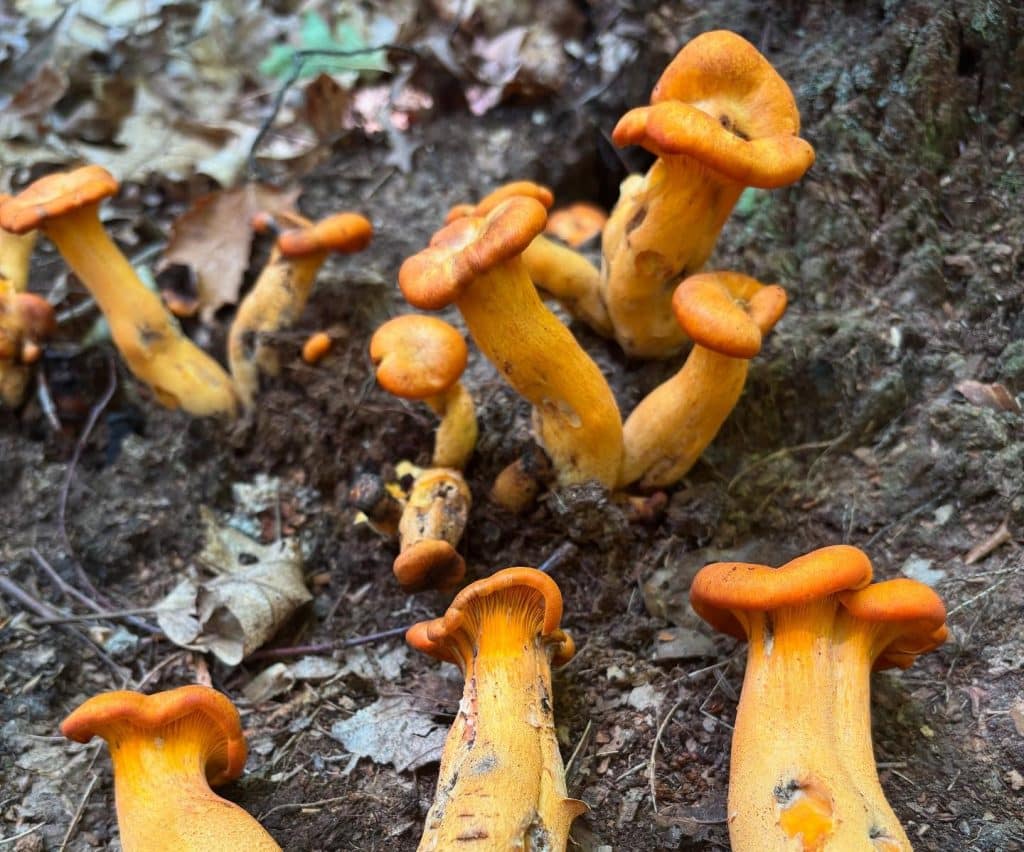
The Jack O’lantern mushroom (Omphalotus illudens) is the toxic look-a-like to edible chanterelles and chicken of the woods mushrooms. Jack o’lanterns fruit summer-fall on decaying hardwood and buried roots. They fruit in clusters with their stems often converging at their base. Jack o’lanterns can be identified by their pumpkin orange color and true gills which […]
Russula aeruginea – Green Russula

Green russula (Russula aeruginea) is an edible mushroom that can be found summer-fall. It grows in association with hardwoods or conifers, often with birch trees. Green russulas are identified by their uniform green cap and brittle stem. Spore print is creamy yellow. Green russulas have a mild flavor that can be compared to white fish. […]
Gyroporus cyanescens – Cornflower Bolete
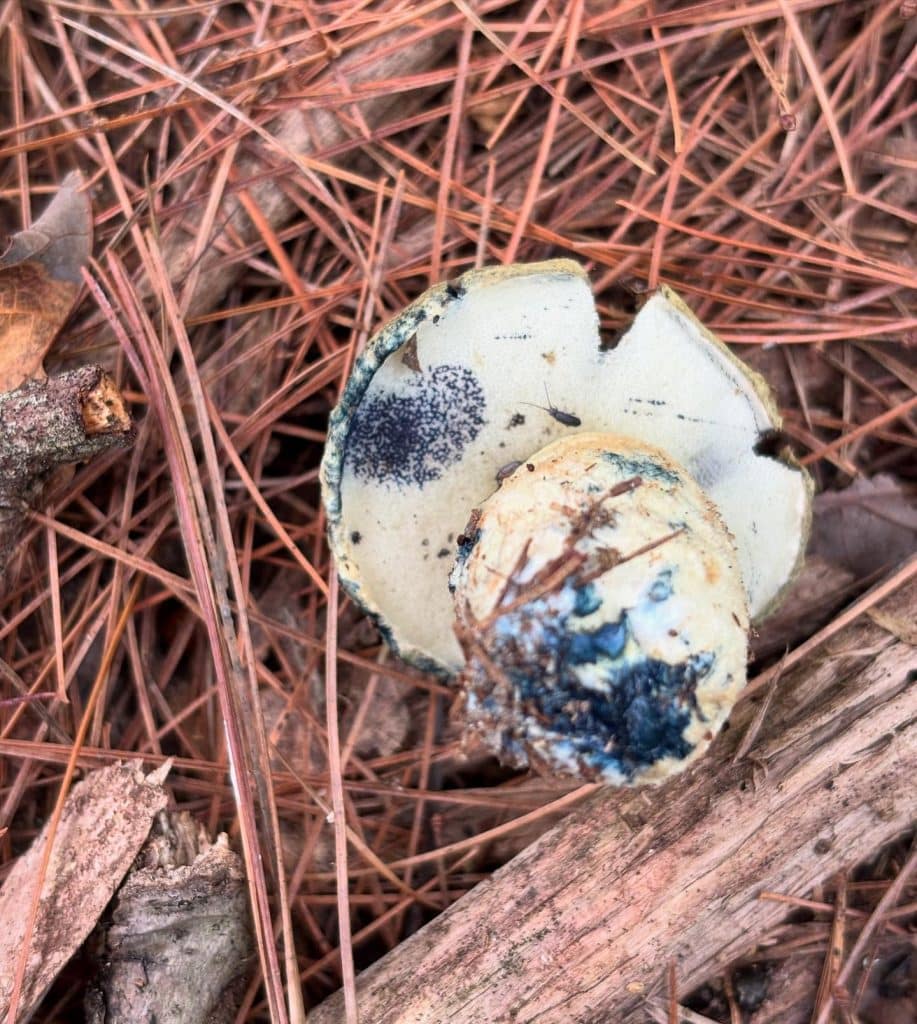
The Cornflower bolete (Gyroporus cyanescens) is an edible bolete that stains an intense shade of blue. The cornflower bolete, also known as the bluing bolete, fruits summer-fall in sandy soil. It can associate with conifers or hardwoods. The mushroom can be identified by its stem and cap that are woolly and pale olive to yellowish […]
Pleurotus citrinopileatus – Golden Oyster
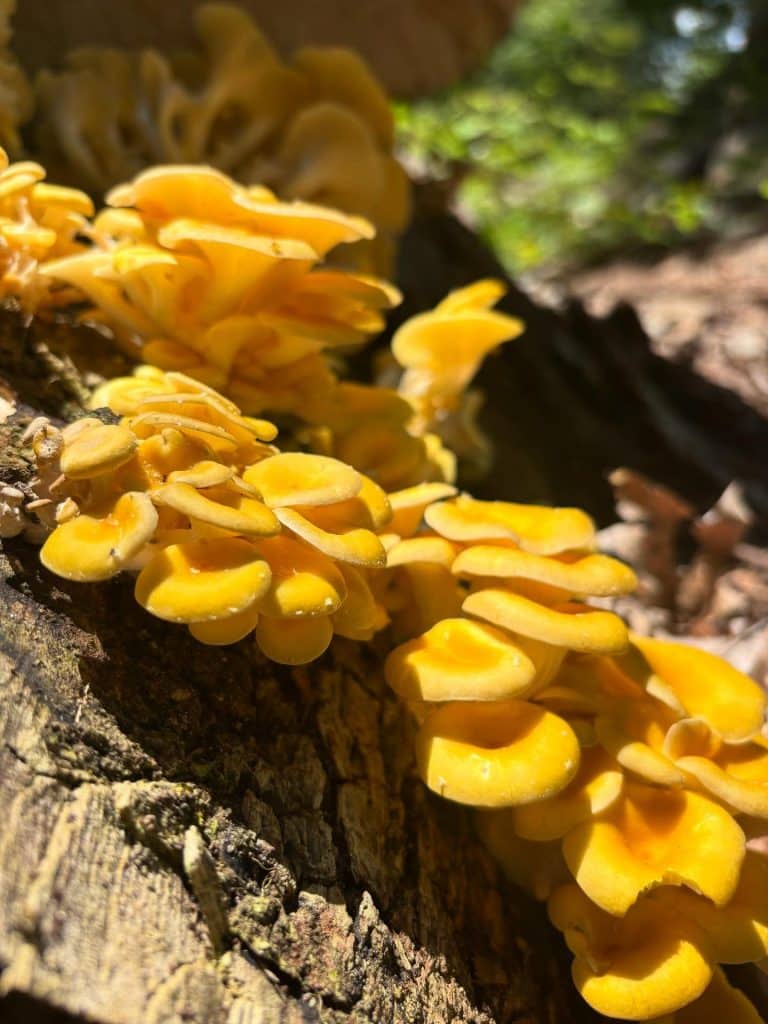
Golden oysters (Pleurotus citrinopileatus) are a potentially invasive edible species of mushroom. Golden oysters are commonly cultivated on outdoor logs. They were first found in the wild having escaped cultivation in 2014 and have been spreading ever since. Golden oysters can be found on hardwood logs, especially elm and beech. They fruit spring to fall. […]
Amaranthus retroflexus – Common Amaranth
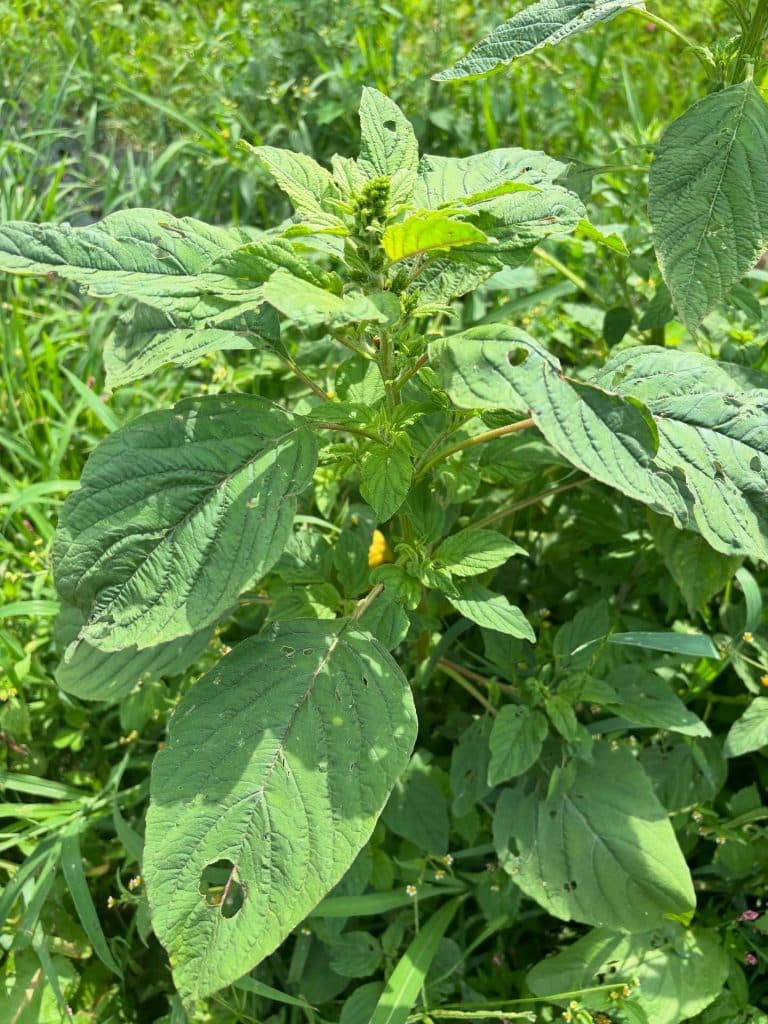
Common amaranth (Amaranthus retroflexus) is a native annual with edible leaves, stems, and seeds. It can be found in farms and gardens where it is usually considered a weed. The plant prefers full sun and disturbed soil. Common amaranth has reddish stems, leaves with wavy edges, green flowers, and black seeds. Leaves are best harvested […]
Polyporus umbellatus – Umbrella polypore
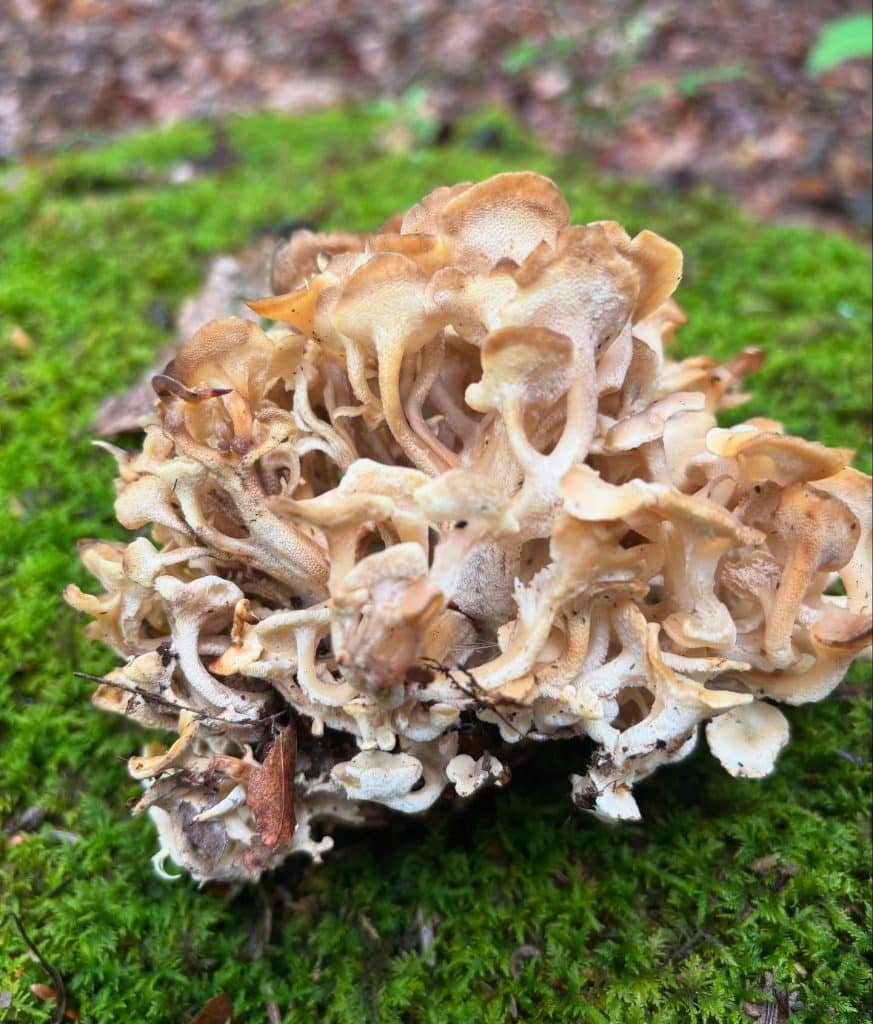
The umbrella polypore (Polyporus umbellatus) is a rare, choice edible mushroom. It can be found at the base of hardwood trees, acting as a weak parasite or a saprobe. They fruit spring-fall. The mushroom can be found at the same spot year after year. The mushroom is composed of umbrella-shaped caps that emerge from a […]
Cantharellus spp. – Golden Chanterelle
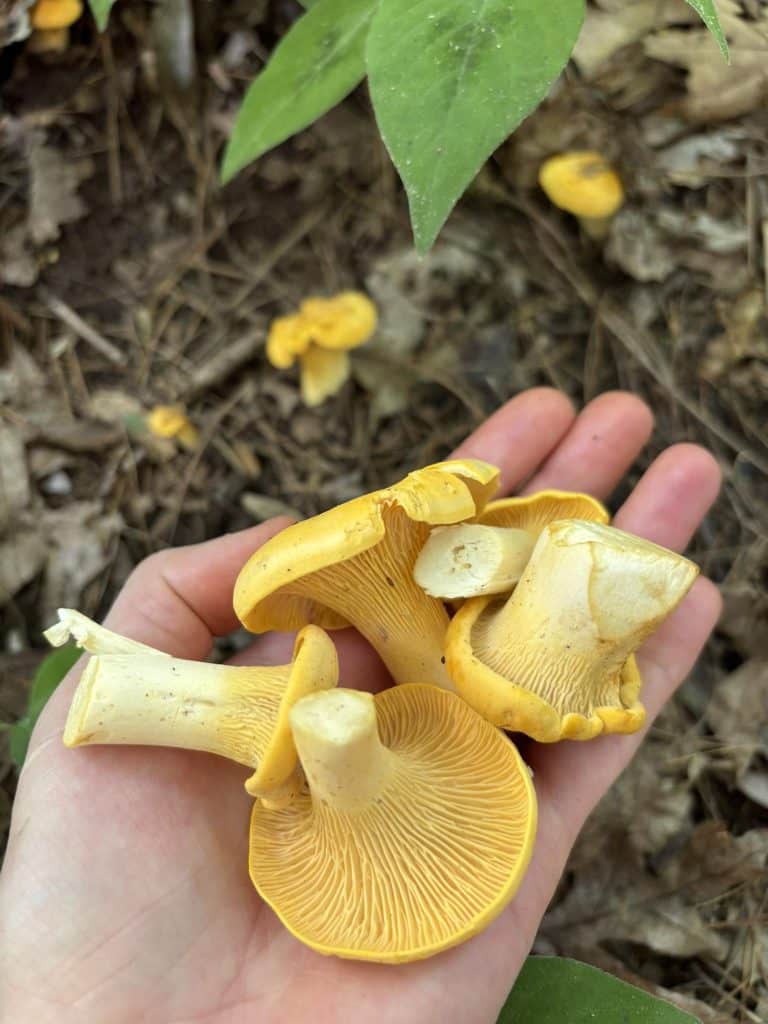
The Golden chanterelle (Cantharellus spp.) is a choice edible summer mushroom. There are multiple species of golden chanterelles in the northeast that can be difficult to distinguish without DNA sequencing. The golden chanterelle can be found June-September. It prefers heat and humidity. Look for the mushroom a few days after heavy rains. The golden chanterelle […]
Boletus edulis clade – King Bolete
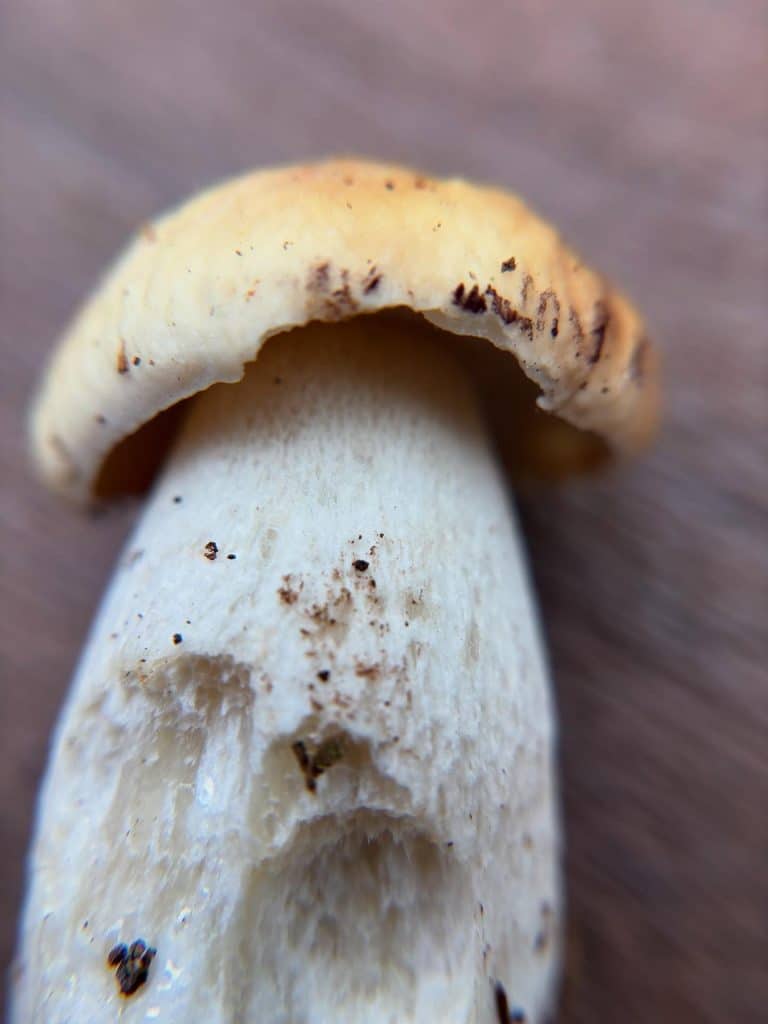
King bolete (Boletus edulis clade) is a group of mushrooms that are the most prized of the bolete mushrooms. King boletes, also known as porcini or penny bun, can grow summer-fall, 1-2 days after a heavy rain. They form mycorrhizal associations with a variety of tree species including pine, spruce, oak, and beech. King boletes […]
Amanita chrysoblema – American Fly Agaric
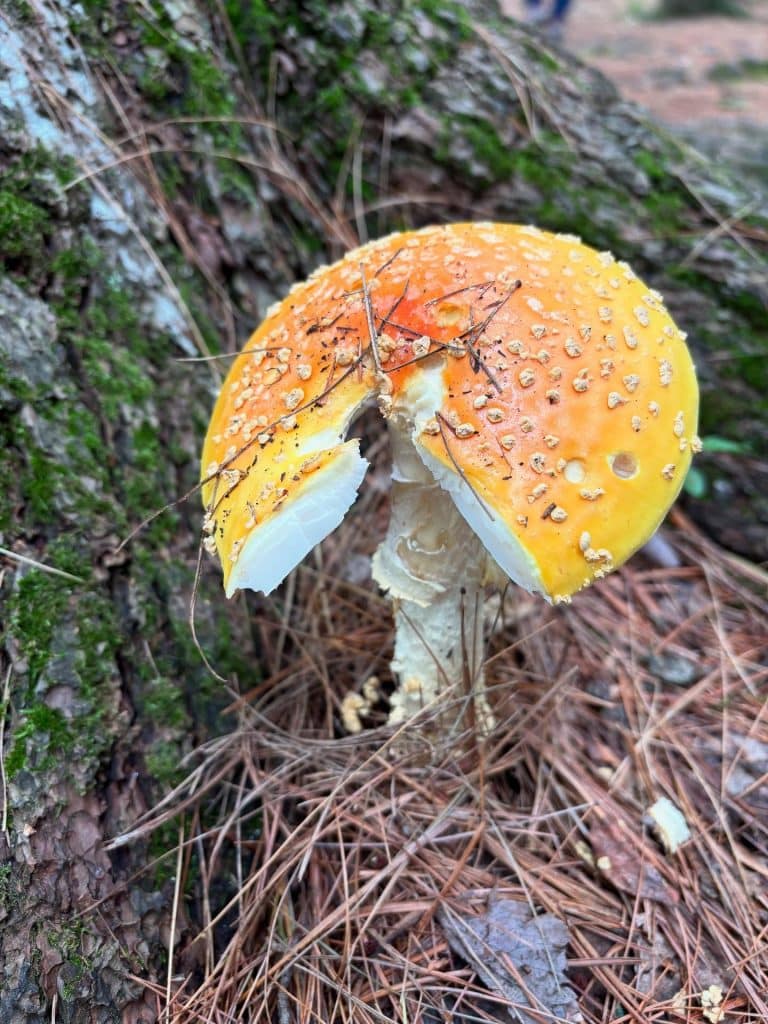
The American Fly Agaric, yellow-orange variant (Amanita chrysoblema) is toxic, psychoactive, or edible depending on preparation. It fruits often in the fall and occasionally in the spring. This species was previously called Amanita muscaria var. guessowii. The American fly agaric is often found growing mycorrhizally with conifers but can also associate with deciduous trees. […]
